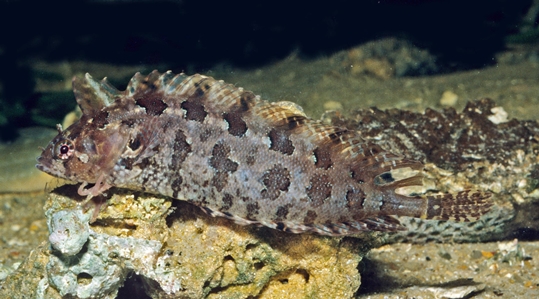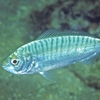General Description
Body strongly compressed, rather deep; tail base and tail fin short; last 2 fin rays of second dorsal fin widely separated from preceding fin rays, last ray connected to base of tail fin; pelvic fins each with a tiny spine and 3 rays (inner ray short); orbital tentacle short, less than half eye diameter. Brownish with horizontal brown or silver bar behind eye and often darker bars on back. To 12 cm.
Biology
Like many other fishes in the family Clinidae, this species has internal fertilisation and gives birth to live young.
Habitat
On shallow rocky reefs with brown macroalgae, in depths of 0-20 m.
Reefs
Coastal shores
Distribution guide
Southern Australia.
Species Group
Fishes › Weedfishes and snakeblennies
Depth
Shore (0-1 m)
Shallow (1-30 m)
Water Column
Max Size
12 cm
Commercial Species
No
Global Dispersal
Native to Australia
Conservation Status
- DSE Advisory List : Not listed
- EPBC Act 1999 : Not listed
- IUCN Red List : Not listed





